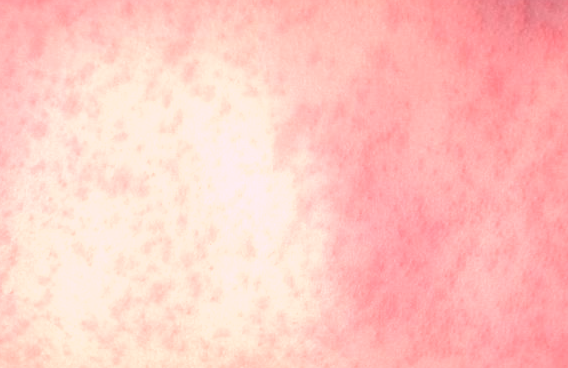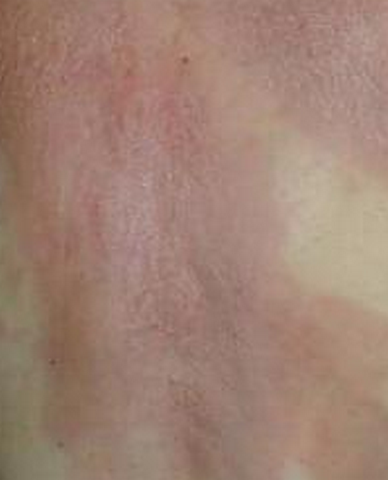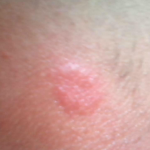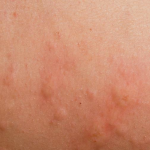Lymphoma rash refers to one of the symptoms associated with lymphoma, which is a form of cancer that occurs in the lymphatic system- a component of the body’s immune system. There are two types of lymphoma, i.e. Hodgkin’s lymphoma and the more prevalent Non-Hodgkin’s lymphoma, both of which can cause lymphoma rash in addition to similar symptoms. This article elucidates the symptoms, causes and treatment of the lymphoma rash linked with Hodgkin’s lymphoma
Patients of Hodgkin’s lymphoma experience anomalous development of the cells present in the lymphatic system. These cells can then migrate to other parts of the body. The advancement of lymphoma to the later stages tends to impair the immune system, thereby diminishing the ability of the body to fight against invasion by pathogens.
The rapid medical and technological progress in diagnostic and treatment procedures have provided the patients of Hodgkin’s lymphoma with a better prognosis and full recovery options.
Symptoms of lymphoma rash
A few signs and symptoms accompanying lymphoma rash are listed below:
- Swollen lymph nodes which occur in the neck, groin and armpits. They generally do not cause pain
- Loss of weight which has no reasonable causes. The affected people may experience a loss of 10 percent or more of the full body weight
- Intake of alcohol can result in adverse effects, including increased pain in the lymph nodes
- Fever along with chills
- Persistent exhaustion
- Occurrence of nighttime sweats
- Problems in respiration, along with coughing and chest pain
- Decreased or lack of appetite
- Increased itching
Types of Hodgkin’s lymphoma
There are several types of Hodgkin’s lymphoma and each type is categorized as per the types of cells that are affected in the disease and the behavior elicited by them. The treatment of the disease is also dependent on the type of Hodgkin’s lymphoma that is present.
- Classical Hodgkin’s lymphoma: It is the most prevalent form of the disease. It is further categorized into many sub types. The lymph nodes in the patients of classical Hodgkin’s lymphoma usually consist of big, anomalous cells called Reed-Sternberg cells, which helps in identifying the type. The different subtypes of classical Hodgkin’s lymphoma are given below:
- Lymphocyte-depleted Hodgkin’s lymphoma
- Lymphocyte-rich classical Hodgkin’s lymphoma
- Mixed cellularity Hodgkin’s lymphoma
- Nodular sclerosis Hodgkin’s lymphoma
- Lymphocyte-predominant Hodgkin’s lymphoma: It is a type of Hodgkin’s lymphoma that is quite uncommon and identified by the presence of large, anomalous cells, often called by their nickname ‘popcorn cells’ because of their appearance. The treatment for lymphocyte-predominant Hodgkin’s lymphoma may not be the same as that of classical Hodgkin’s lymphoma. Early diagnosis of this type of lymphoma can help in higher chances of a possible cure.
Causes of lymphoma rash
The precise cause of Hodgkin’s lymphoma which also features a lymphoma rash is yet unknown. However, it is widely understood that a majority of Hodgkin’s lymphoma cases are caused because of an error or a mutation in the DNA of a cell referred to as ‘B cell.’ These cells help in fighting infections. Such a mutation instructs the cells to rapidly undergo division and continue to thrive, even after the usual time when an aged cell is supposed to die. It thus leads to a buildup of numerous, oversized B cells in the lymphatic system. They eventually prevent the healthy cells their due space in the body, leading to the adverse symptoms of Hodgkin’s lymphoma.
A few risk factors which increase the propensity to developing lymphoma rash are discussed below:
- Presence of deadly conditions such as HIV/AIDS, intake of immune suppressing drugs to allow a successful organ transplant, etc. can result in an impaired immune system, which in turn can pose elevated risk to developing lymphoma rash
- Individuals with a family history of lymphoma rash associated with either Hodgkin’s lymphoma or Non-Hodgkin’s lymphoma are also at increased risk
- A personal history of many cases of Epstein-Barr infections which in turn result in severe conditions such as infectious mononucleosis, can elevate the risk to developing lymphoma rash
- Individuals in the age group of 15 to 35 years and those over the age of 55 years are at increased risk to developing lymphoma rash linked with Hodgkin’s lymphoma.
- Males are at a bit more prone to developing lymphoma rash as compared to females
Treatment of lymphoma rash
- Treatment of the different types of lymphoma results in clearance of lymphoma rash as well. Treatment involves destruction of as many cancer cells as possible, thereby making remission of the disease a possibility.
- Chemotherapy involves the use of specific cancer killing drugs which can be taken orally or administered intravenously. Chemotherapy drugs have many possible side effects
- Radiation therapy involves the use of extreme rays of radiation that are directed at the cancer cells to destroy them. It is mostly used in combination with chemotherapy.
- Stem cell transplantation is a procedure which involves replacing the abnormal bone marrow with healthy stems cells which help in the formation of new bone marrow.
Lymphoma rash




